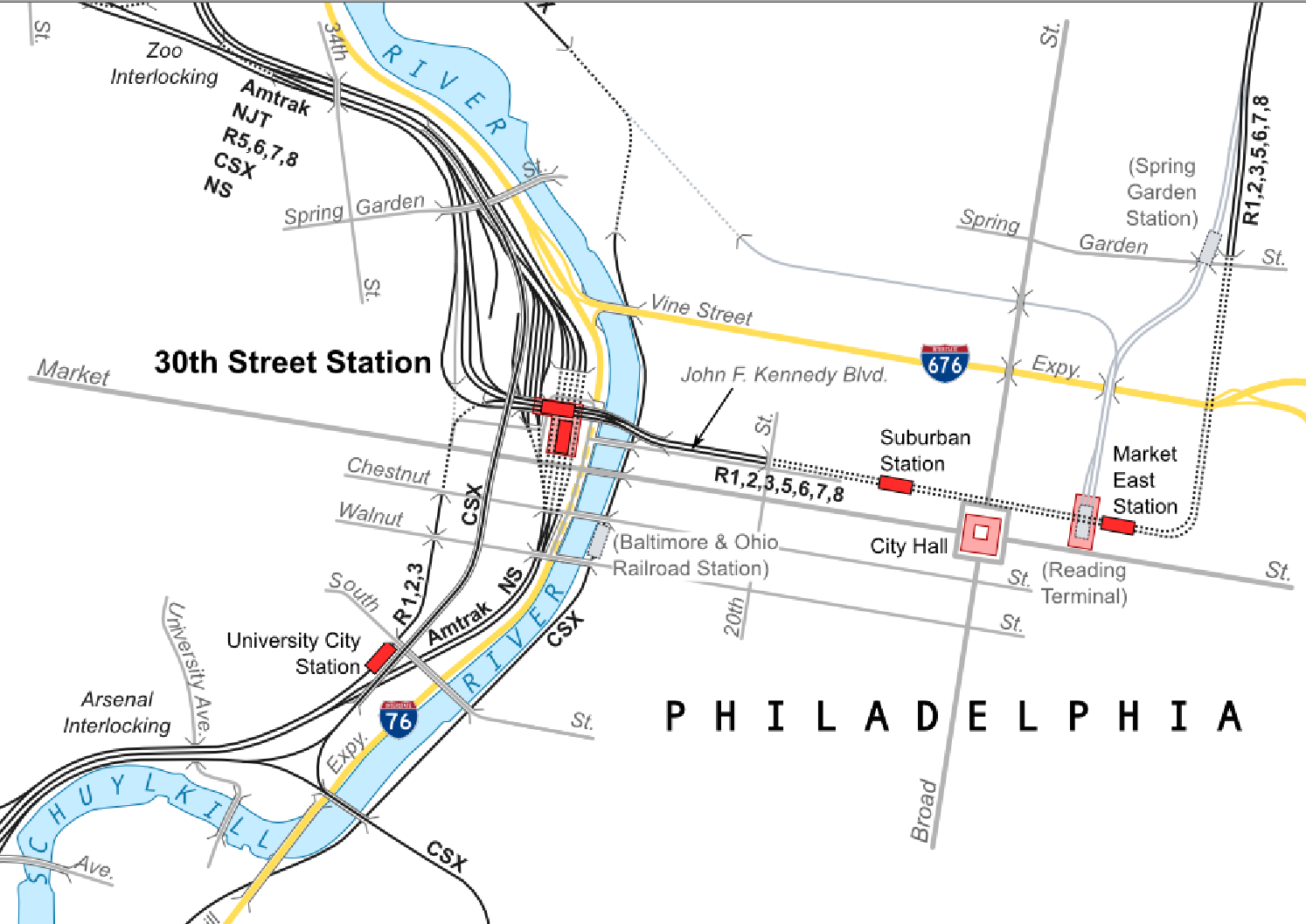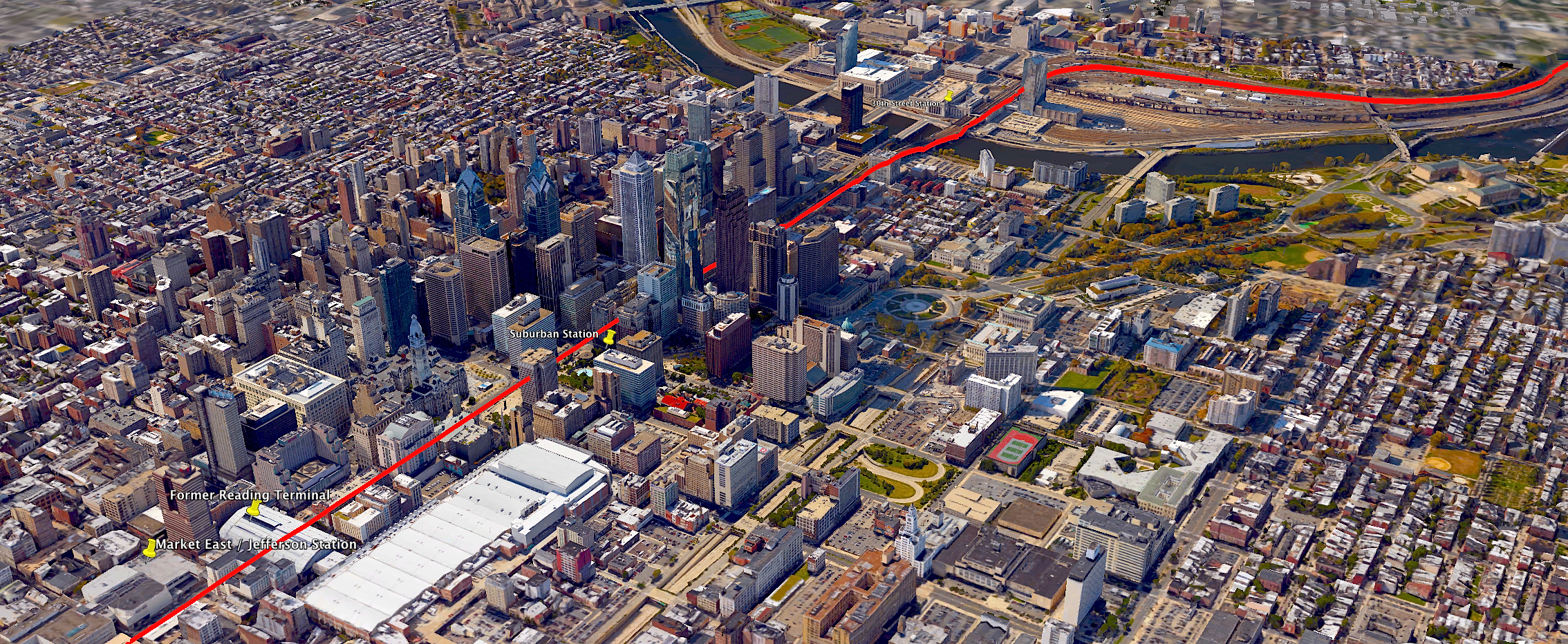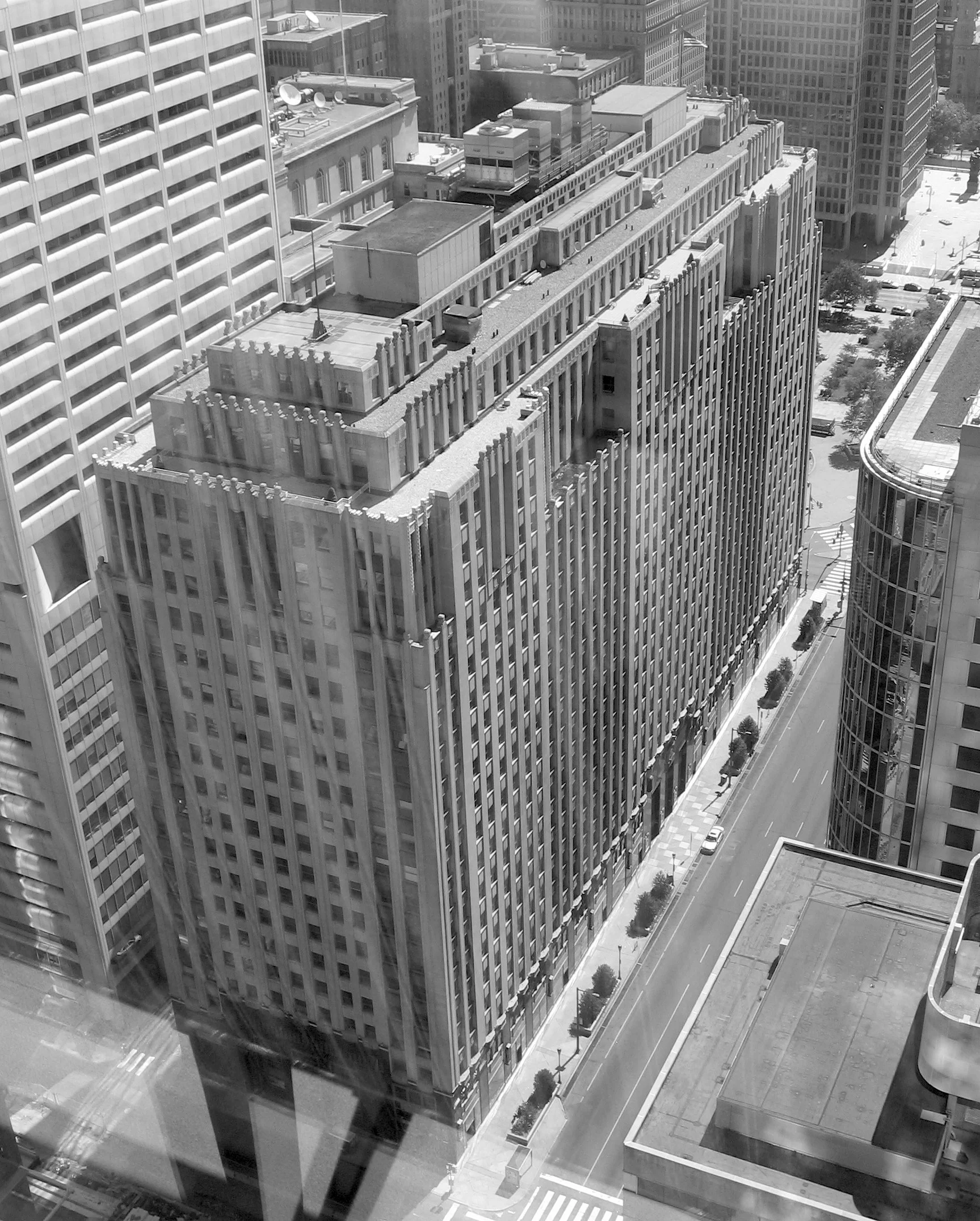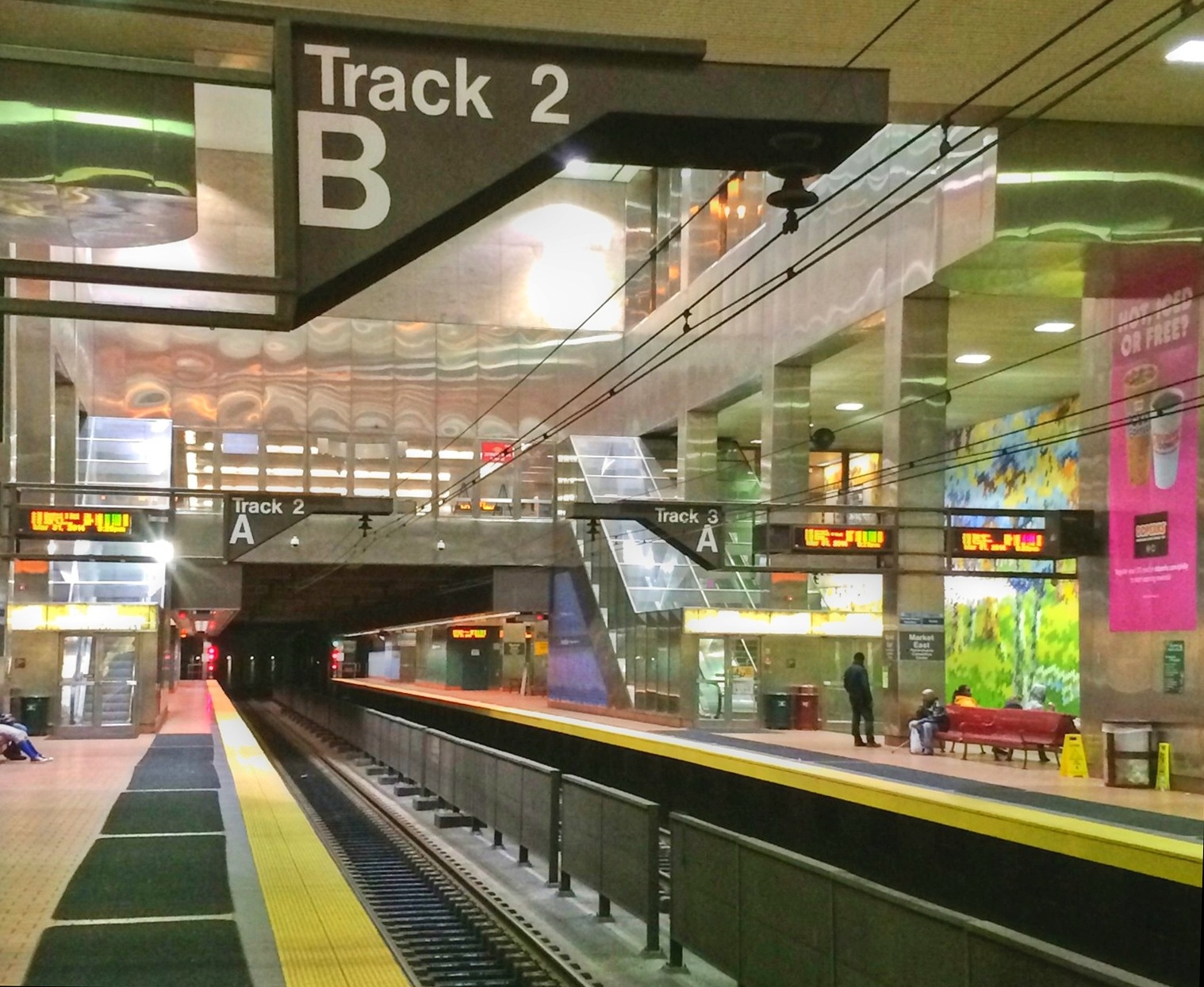At about the same time Massachusetts eliminated a Rail Link from the Central Artery Project, Philadelphia completed the first such link in the United States, a 1.7 mile tunnel beneath the center city, linking its two main terminals, Suburban Station and Reading Terminal, known as the Center City Commuter Connection. Its 4 tracks currently carry more than 650 trains per day, more than double the number of revenue trips currently accommodated by Boston’s South Station, which is at capacity despite having more than 3 times as many tracks (13 vs. 4).
More impressively still, Philadelphia’s run-through service generates far fewer non-revenue trips, thereby reducing costs while preserving capacity for further service improvements. By contrast, almost 30% of the trips in and out of South Station are non-revenue (i.e., unproductive) trips necessitated by the inherent inefficiency of stub end terminal operations, which the MBTA itself concedes in the SSX DEIR.





